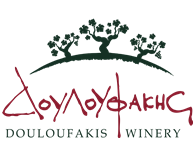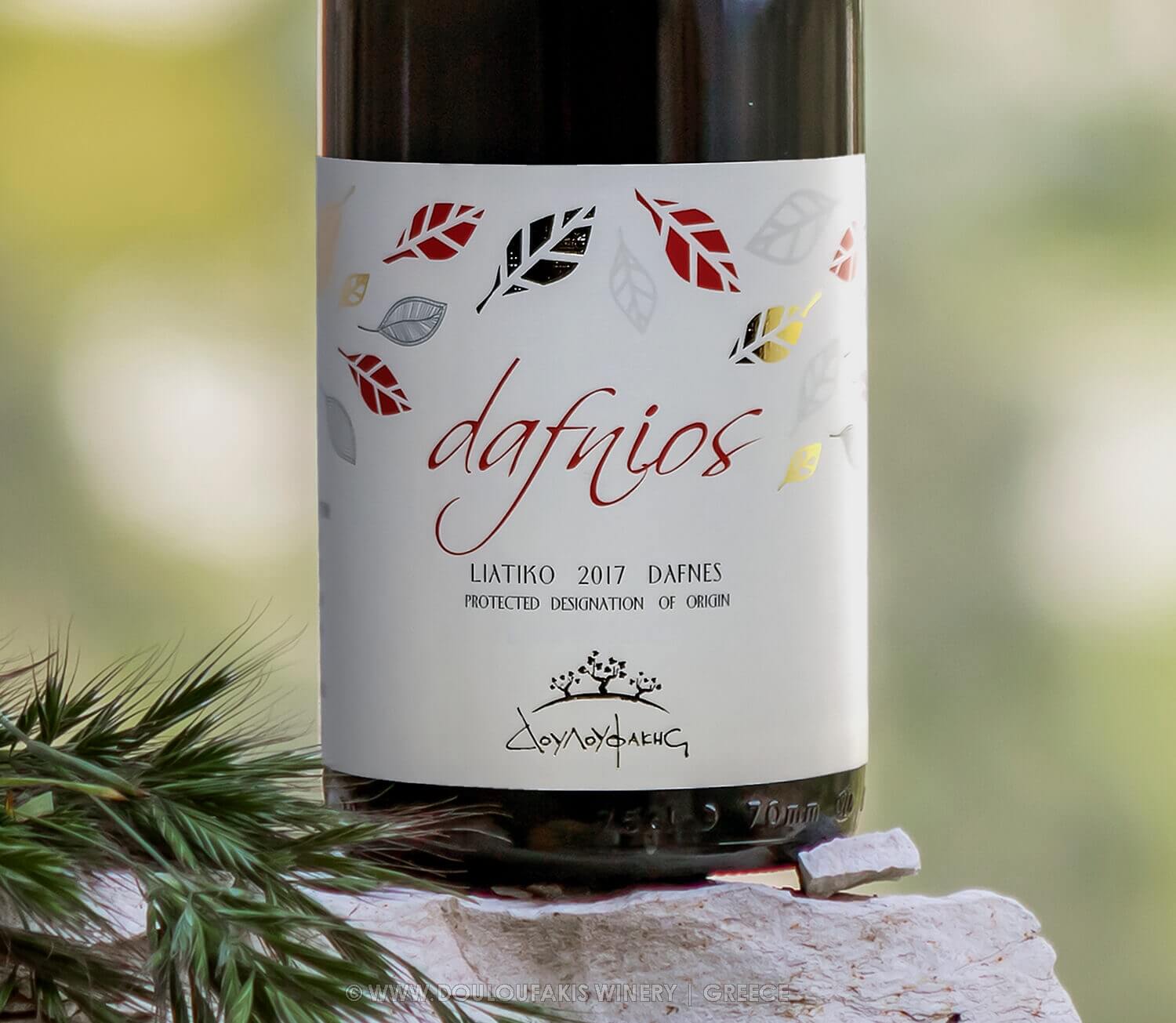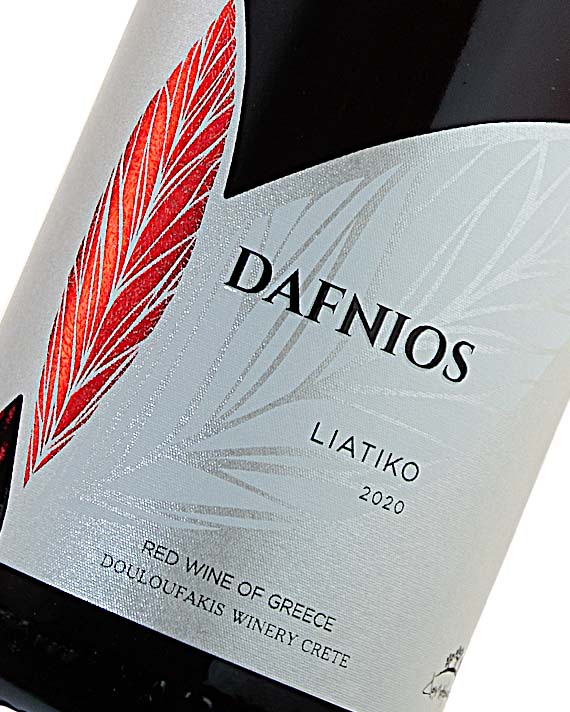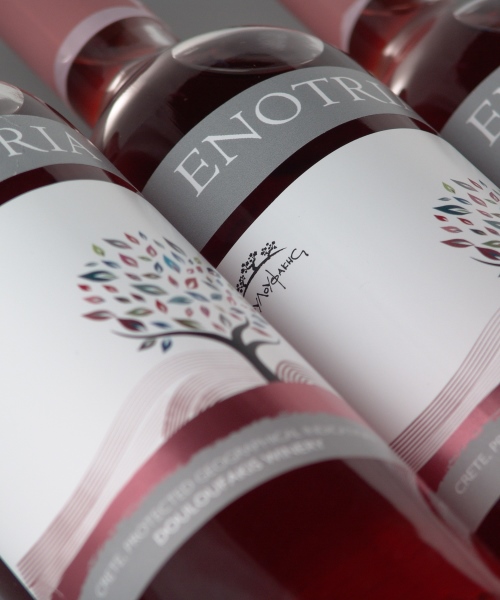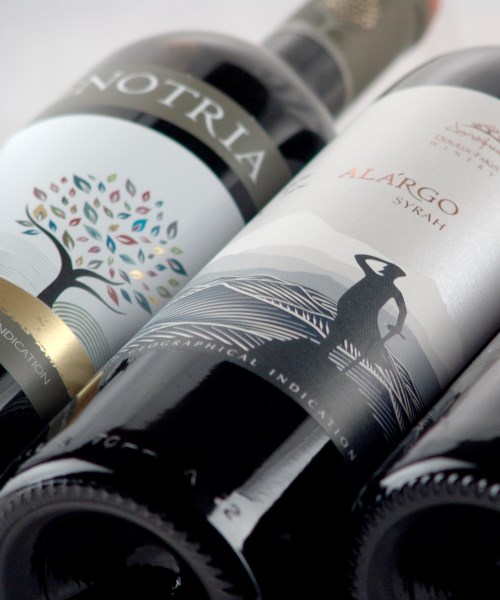A unique variety, that dates back to the 3rd and 2nd century BC. As it has perfectly adapted to the warm climate of Crete, Liatiko manages to create delicate wines, full of finesse that can accompany every meal. This unique variety gives each wine an exquisite bouquet of aromas, with fresh red fruits dominating.

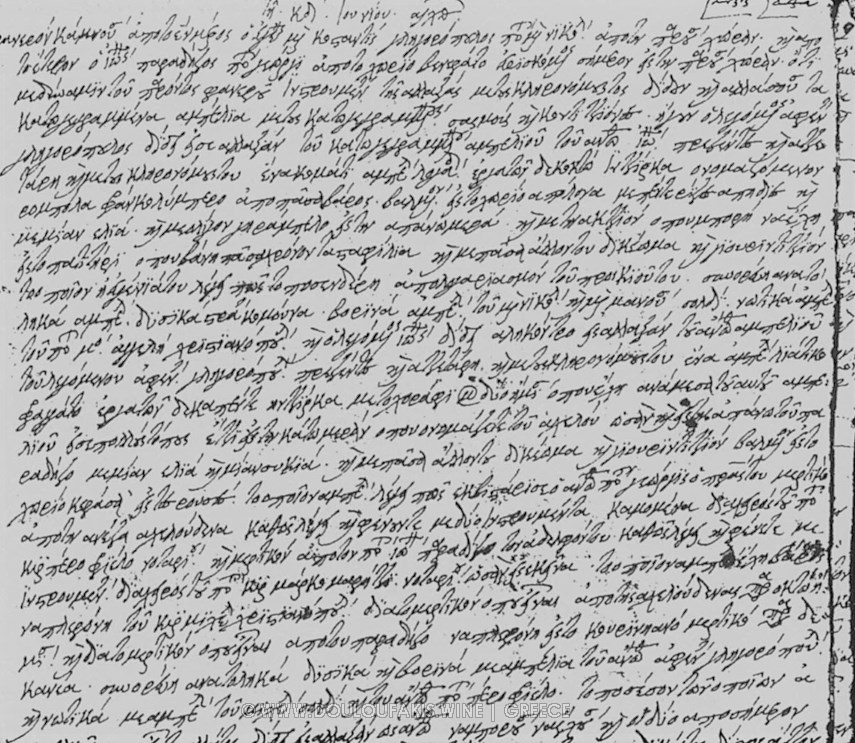 Contract from Venetian era: Bartering a Logado vineyard for a Liatiko vineyard
Contract from Venetian era: Bartering a Logado vineyard for a Liatiko vineyardThe history of the grape variety
Liatiko
The name «Liatiko», derives from the month of July, as it is the first variety whose berries change colour in July.
It is probably the oldest indigenous red variety of the Cretan Vineyard. The cultivation of the Liatiko variety dates back to the 3rd or 2nd century BC, according to the dating of grape remnants found in wine presses at the "Melissa" site, within the Dafnes zone.
Liatiko wine is mentioned in many historical texts of the 13th century and it was blended with other local varieties for the production of the once famous Cretan Malvasia wine. There are also references to the Liatiko variety in archival sources of the Venetian occupation, in the 17th century. Vineyards’ purchase and selling were frequent in Crete at that time, as the cultivation of Liatiko was a lucrative occupation. Therefore, Liatiko appears in many contracts of the time, specifically we mention a contract of the notary Nicolo Negri on June 24, 1609, where two inhabitants of two nearby villages, Venerato and Kerasia barter a Logado vineyard for a Liatiko vineyard.
Liatiko is often incorrectly referred to as identical to "Aleatico" variety, a very old Italian variety. Recent research based on comparative viticulture and DNA analysis has shown that these are two different varieties, as the book "Wine Grapes" by J. Robinson, J. Harding, J. Vouillamoz, Penguin Books, 2012 indicates.
VINEYARD CULTIVATION
LIATIKO GRAPE VARIETY
In Dafnes area the soil has medium texture and it is characterized as clay loam. It is rich in calcium carbonate in a percentage that exceeds 40%. The presence of calcium carbonate that neutralizes the acidity of the soil, in connection with the pH that ranges from 7 to 8.5, is ideal for the absorption of most trace elements by the plant. Calcium carbonate also improves soil structure, ensuring good drainage and good soil temperature. These soil characteristics contribute to the good phenolic and technological ripening of the grapes and therefore to the production of wines with rich structure and volume, intensity in colour and balanced acidity.
The vineyards in Dafnes area are located northeast of Psiloritis Mountain, which is the highest of the island, with an altitude 2456m.
The relief of the wider area is formed by rolling hills, almost parallel to each other, extending from the northern part of the prefecture to the south at an altitude of 300-500m. The vineyards are planted on the slopes of these hills, east or west oriented.
The elongated valleys that are formed between the hills serve as natural canals, transferring the conducive chilled breeze from Cretan Sea to the center of the prefecture, maintaining the temperature at the slopes at very good levels, all around summer. Rainfall is rare during the summer, so plants and grapes avoid virus infections.
The cultivation of Liatiko vineyards in the area for so many centuries -from the time of Venetian rule (13th to the 17th century) up to now- is due to this unique microclimate described above.

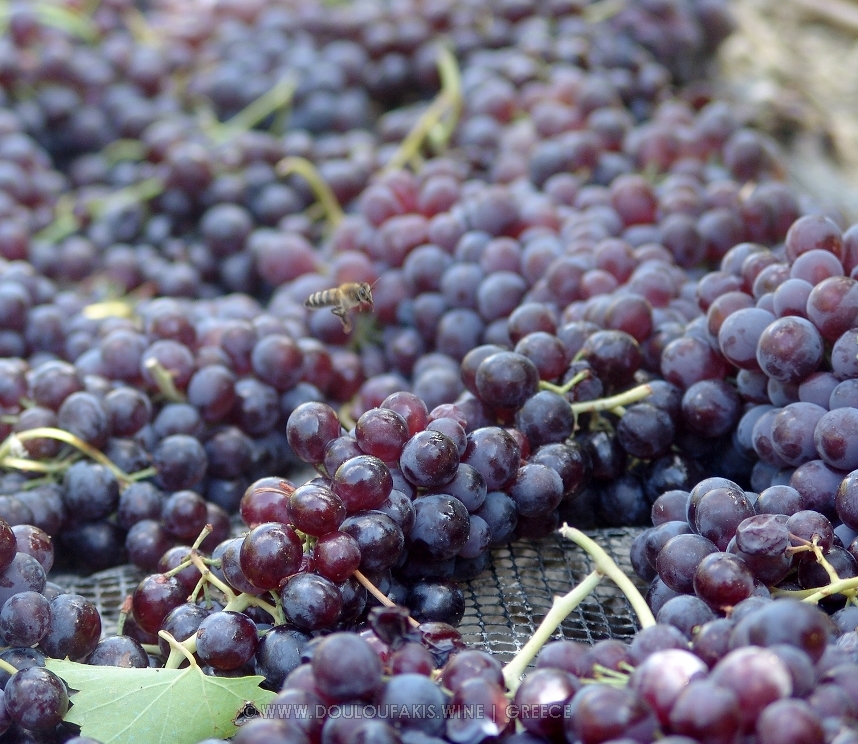
The weight of the grape is medium and the weight of the berry is small. The sugar level is high, while the level of acidity is satisfactory.
The great advantage of Liatiko in Dafnes is that it matures properly, because of the beneficial microclimate. The variety has been fully acclimatized, as it has been cultivated in the area for centuries.
THE VINE DESCRIPTION
OF THE LIATIKO VARIETY
Young leaf: of yellow-green colour with bronze-red areas, cobwebby on upper side and felty on lower side.
Leaf blade: medium thick, slightly bullate and crimped, cobwebby upper side and felty lower side.
Petiolar sinus: deep, closed with slightly overlapping lobes and V-shaped base.
Veins: sleek, locally cobwebby upper side, green and downey lower side.
Serrations: small, unequal, pointed, both sides straight.
Petiole: medium, thick, cobwebby, almost equal to the length of the middle vein.
The vine description was based on "The Cretan Grapes", a book by Manolis and Maritina Stavrakaki.
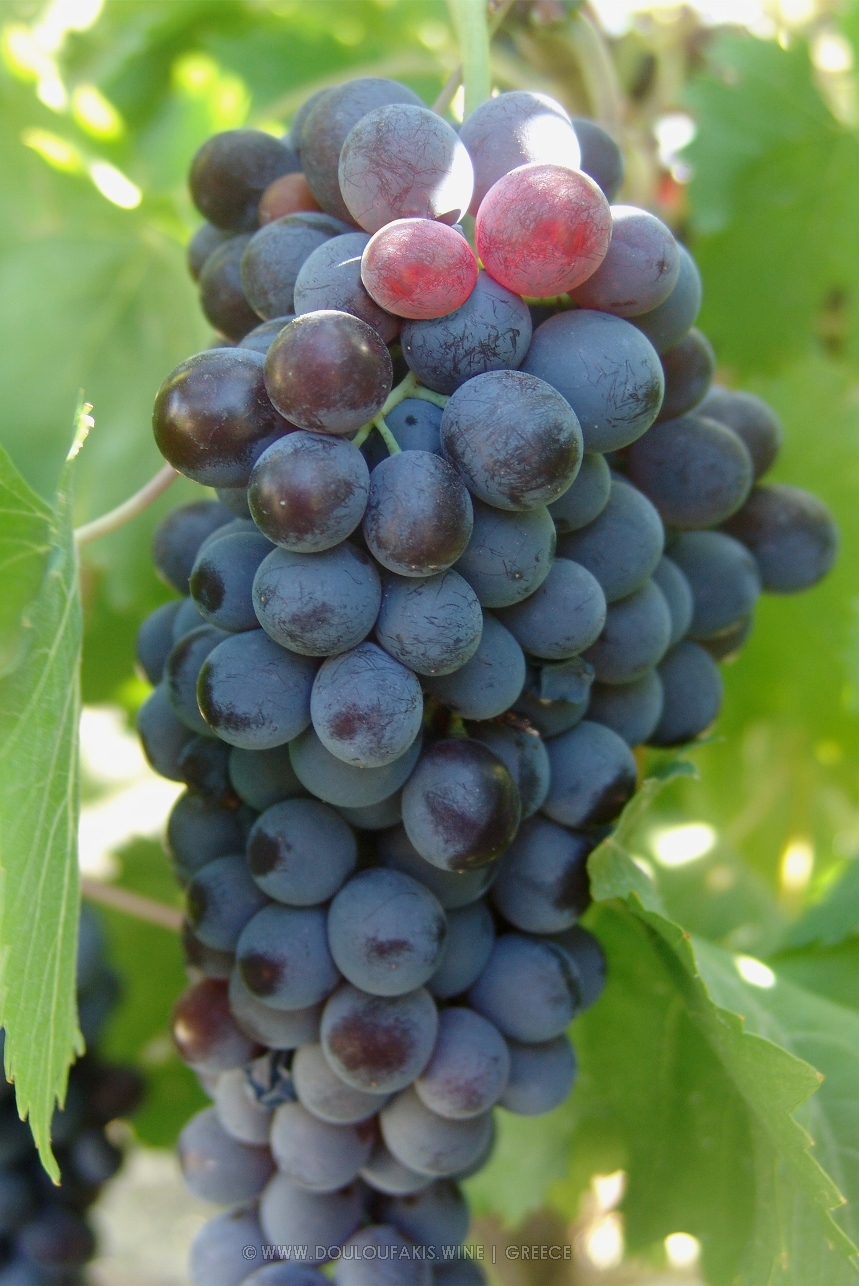
PHENOLOGICAL DATA
OF LIATIKO VARIETY
• Vegetation: March 20-30
• Full vegetation: In the second 10 days of April
• Flowering beginning-full flowering: May 10-15
• Maturation beginning: August 20-30
TECHNOLOGICAL CHARACTERISTICS OF THE MUST
OF A FULLY MATURED LIATIKO
• Total acidity: 4,4 – 6,5 g/L
• Active acidity pH: 3,3 - 3,9
GREEK LEGISLATION FOR LIATIKO VARIETY
It also belongs to the permissible vinifiable vine varieties in the regions of Central Greece and Macedonia.
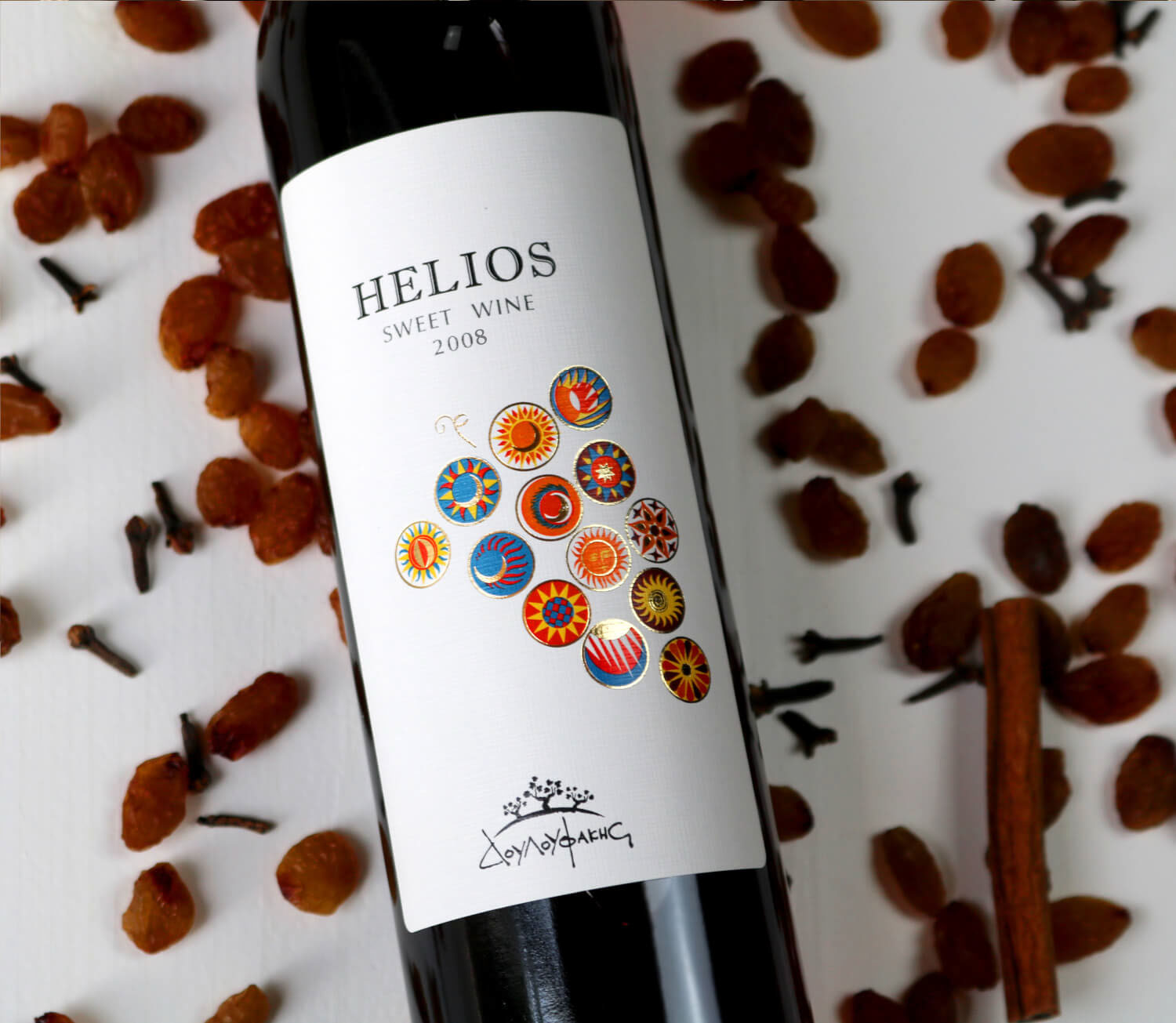
The characteristics of Liatiko wine
Liatiko has a low colour intensity and varies depending on its age. It starts from a light ruby color that over time evolves into the color of burgundy.
The unique aromatic bouquet combines fresh red fruits with aromas of herbs and flowers. As it ages, this bouquet evolves and its special aromatic character is highlighted through notes of leather and spices and licorice.
The mouth is dominated by the same aromas, a moderate body, good acidity and soft tannins.
It can age up to 8 to 10 years, depending on the method of vinification.
As for the sweet wines from Liatiko, due to the concentration of grapes under the sun, this variety gives us wines with high levels of alcohol and low, very soft tannins.
Liatiko is considered as one of the finest red variety of the Cretan vineyard and one of the significant Greek red varieties.
 DE
DE  RU
RU  EL
EL  EN
EN 